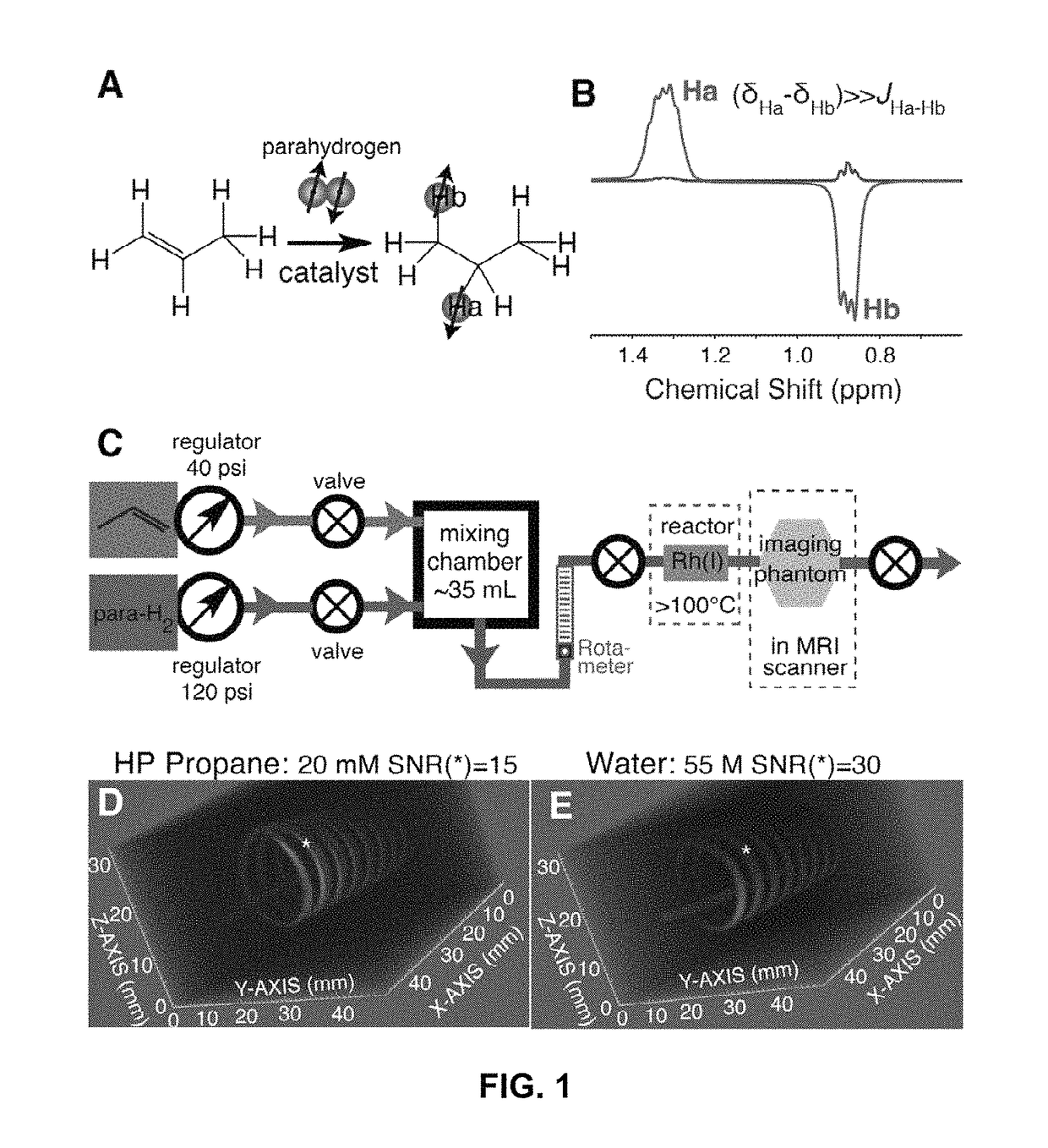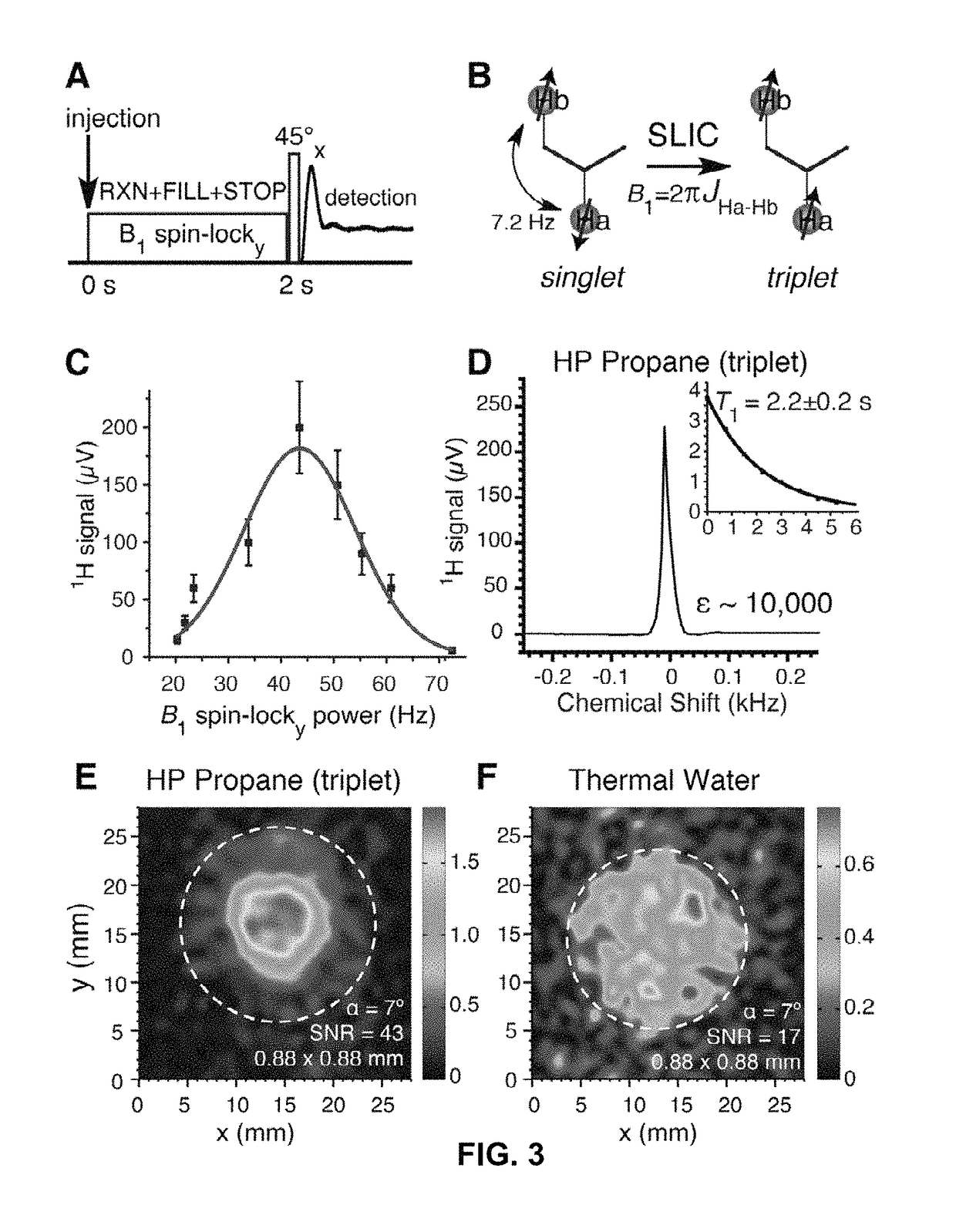Creation of long-lived singlet states of gases and their use as inhalable MRI contrast agents
a technology of inhalable contrast agent and long-lived singlet state, which is applied in the direction of magnetic variable regulation, sensors, diagnostics, etc., can solve the problems of limited such promising technology to a few sites, high initial cost of materials, and high cost of hyperpolarization equipmen
- Summary
- Abstract
- Description
- Claims
- Application Information
AI Technical Summary
Benefits of technology
Problems solved by technology
Method used
Image
Examples
Embodiment Construction
[0014]Reference will now be made in detail to the embodiments of the present invention, examples of which are illustrated in the accompanying drawings.
[0015]The present invention proposes the use of low magnetic fields (e.g., 1-300 mT) to create singlet or pseudo-singlet states after a chemical reaction with parahydrogen to produce hyperpolarized gas. It can be used for low-field MRI of hyperpolarized propane gas, including the use of hyperpolarized propane for low-field MRI for ultra-fast (on a time scale of a second) molecular imaging of lung, brain, heart and other organs.
[0016]A chemical reaction of molecular addition of parahydrogen gas to unsaturated (C═C or C≡C bonds) molecular precursors has been shown to create pseudo-singlet states of nascent parahydrogen spins in the reaction product according to the following equation:
(R1)(R2)C═C(R3)(R4)+H′—H″=>(R1)(R2)CH′—CH″(R3)(R4), (eq. 1)
where H′—H″ is parahydrogen molecule containing a pair of two proton nuclear spins in a pseudo-...
PUM
 Login to View More
Login to View More Abstract
Description
Claims
Application Information
 Login to View More
Login to View More - R&D
- Intellectual Property
- Life Sciences
- Materials
- Tech Scout
- Unparalleled Data Quality
- Higher Quality Content
- 60% Fewer Hallucinations
Browse by: Latest US Patents, China's latest patents, Technical Efficacy Thesaurus, Application Domain, Technology Topic, Popular Technical Reports.
© 2025 PatSnap. All rights reserved.Legal|Privacy policy|Modern Slavery Act Transparency Statement|Sitemap|About US| Contact US: help@patsnap.com



